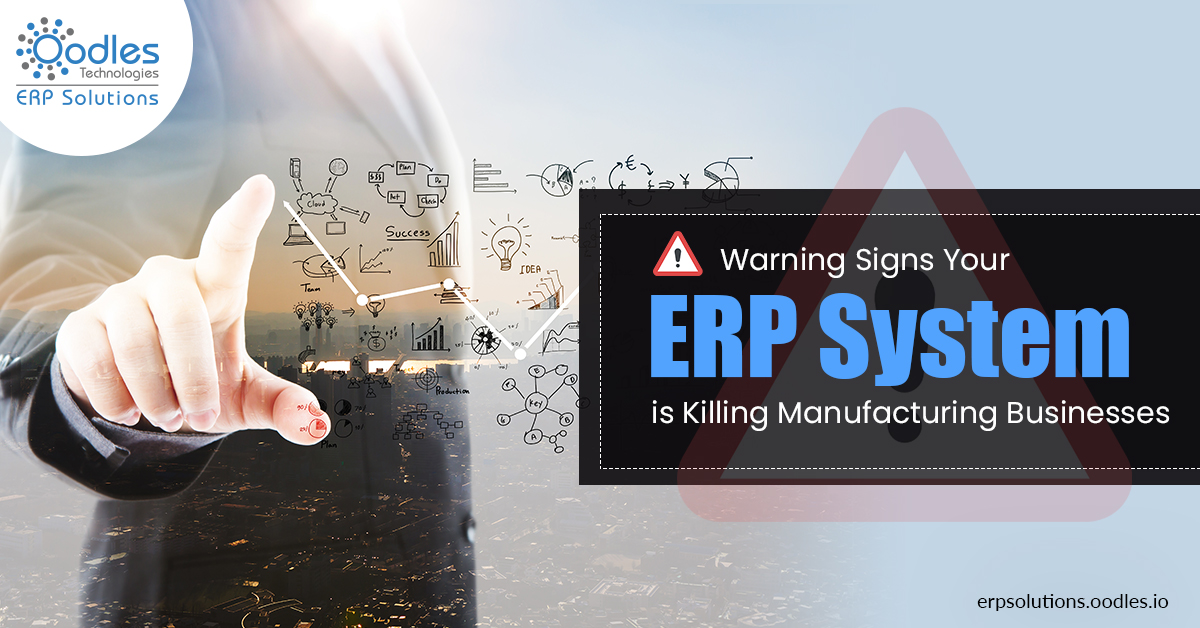Manufacturing Businesses: An Overview
The ultimate competitive advantage is a company’s ability to learn and translate that learning into actions quickly. To stay ahead, businesses should keep learning and adopting new processes and technologies. ERP is one such process that has changed the outlook of businesses. Traditionally, manufacturers used ERP (Enterprise Resource Planning) system to boost the overall performance of the business. Manufacturing businesses used ERP to streamline and simplify business processes for competitive advantage. They missed important implementations during the growing technological advancements. It turned the table around and instead of cost reductions and performance improvements, ERP systems started creating delicacy, complexity, and lack of visibility. In the manufacturing sector, business needs, processes, and data are changing continuously. Subsequently, it has become impossible for an inflexible legacy ERP system to accommodate the growing demands of business. Read on to discover the warning signs that tell if the ERP system is hampering the manufacturing business model.
How to Know if Your ERP System is Killing your Manufacturing Businesses?
1) Time-consuming and Costly Changes:
In every 24 months, software providers release some new features untimely. Now, any change coming from the vendor’s side requires an organization to spend more money and time to adapt to them. Sometimes you are not able to find skilled resources to update the change.

Thus, you work on an outdated system and bear overheads.
Not embracing those features means you are wasting the money on maintenance fees and also losing competitive advantage. On that account, using the ERP implementation is necessary for functionality and technology improvements.
2.) High Maintenance Fees:
ERP solution maintenance fee is rising day by day and is eating out the IT budget. ERP vendors are constantly raising maintenance fees. It increases the total cost of ownership over time.
For example, SAP has recently announced that it is raising it’s annual maintenance fees from 17% to 22%.
When you are reviewing your IT spending then pay proper attention to multiple support contracts for the same applications.
3.) Interacting with Systems Becomes Difficult for Trading Partners:
With the growing business, in the manufacturing industry, the value stream gets interconnected. Then, it becomes necessary to provide suppliers with access to orders and inventory levels. Are your suppliers getting the information they actually want? Do suppliers need special software to connect? You need to answer some questions for yourself.
4.) Accessing Data Becomes Difficult While Travelling:
Business neither stops nor works according to your comfort. Even when you are traveling, your business is on. You can stay in touch with your smartphone but doing everything on a tiny device is a bit difficult. No doubt, wireless connectivity is everywhere but still, your actions get limited because you cannot access business operations.
Then, if users are not able to get information from anywhere and at any time, then you are behind your adversaries.
5.) Upgrades are Troublesome for Manufacturing Businesses:
Upgrades often require proper time and plan to execute. Software vendors usually provide upgrades every 12-24 months. Updates can be of an operating system, disk space, hardware, database management and so on. You can be in trouble if the business is down during the conversion.
Concluding Thoughts:
There is a new breed of cloud ERP that solves these challenges mentioned above. Cloud ERP leverages robust ERP functionality without the need for expensive servers, back-up equipment, database software, and IT specialist.
Read More: The Useful Insights Into Custom ERP Software Solutions








